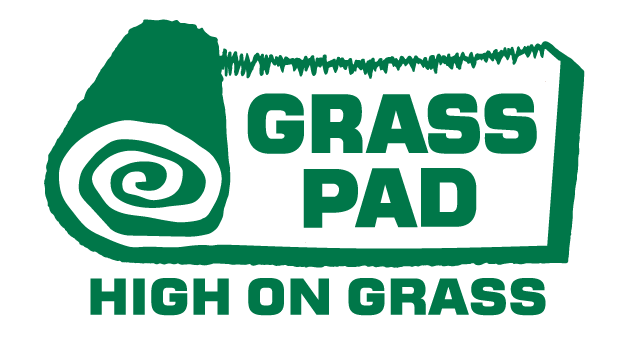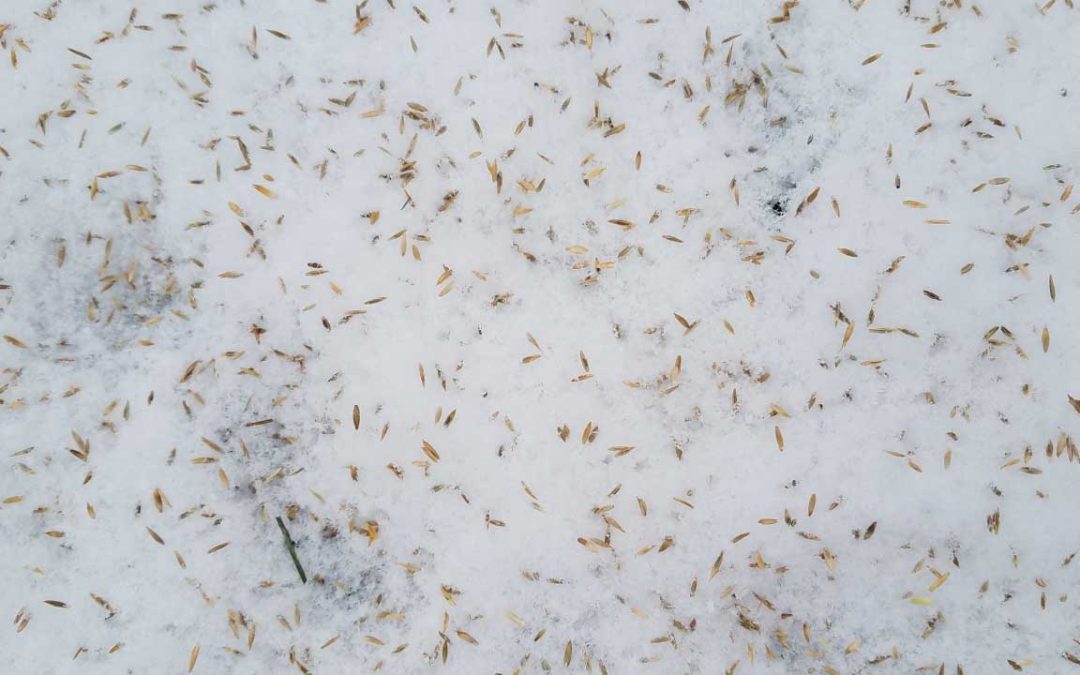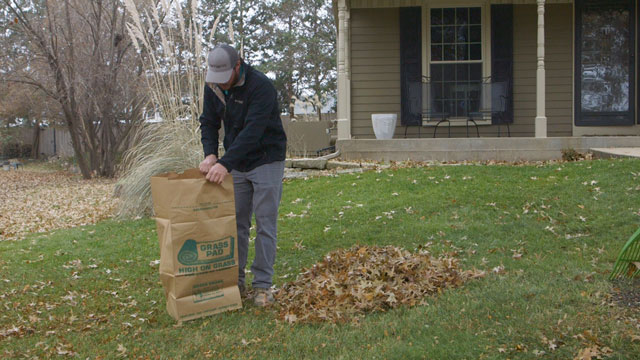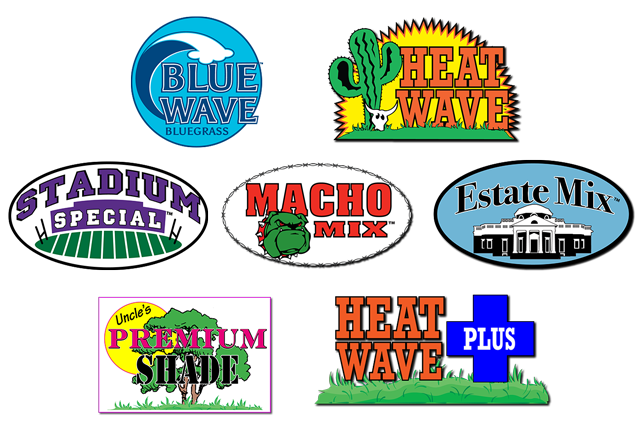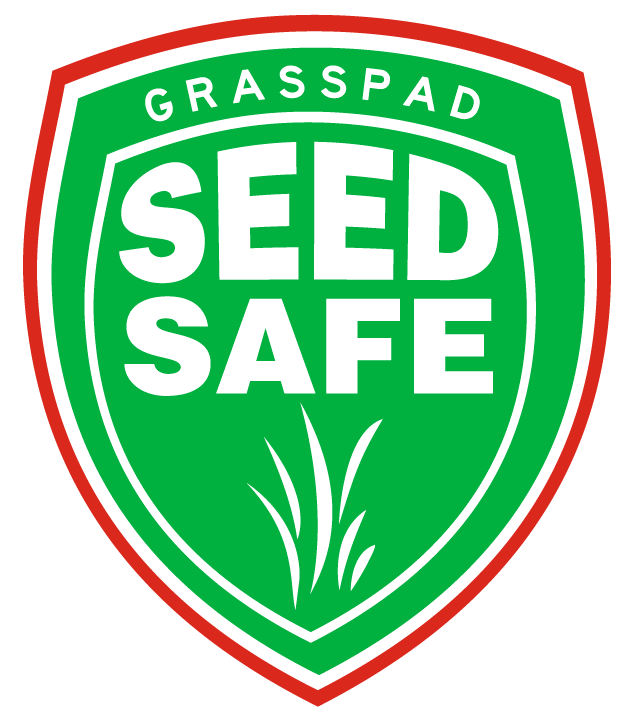What is Dormant Seeding?
Dormant seeding is a collective term for overseeding lawns in late fall and winter when soil temperatures are too cold to allow grass seed to germinate. In the mid-west, the opportunity for dormant seeding is best from mid-November through early March, while soil temperatures remain below 50 degrees.
Here’s why you should be dormant seeding.
When you have missed the fall overseeding window, dormant seeding helps to eliminate bare spots and thickens turf to fight spring weed pressure. Research shows winter dormant overseeding outperforms spring overseeding when using cool-season grasses. Turf-type tall fescue, bluegrass, and ryegrass germinate sooner in cold soils and will have more time to develop than seed sown in spring. Grass seeds sown over densely shaded areas, specifically under trees, will gain an advantage allowing emerging grass plants to establish before spring foliage arrives.
What is Snow Seeding?
Snow seeding is a style of dormant seeding. It requires a light snowfall (up to an inch) that allows bare spots to be seen. Spread seed by hand on areas that need thickening up. As the snow melts, it brings the seed into good contact with the soil.
What is Frost Seeding?
Frost seeding is another style of dormant seeding, overseeding moist soil before freezing weather. The natural freeze and thaw cycle of freezing soils will create small cracks or pockets, perfect for catching and holding grass seeds. As the soil dries, the pockets collapse and cover the seed. This same freeze and thaw cycle are also Mother Nature’s natural soil aeration process.
When is the Best Time to Dormant Seed?
Dormant seeding is the most successful when applied after the last tree leaves have fallen and have been removed. Removing yard debris allows for better seed-to-soil contact. Dormant seeding should occur early enough in winter to avoid the muddy conditions from spring thaw and rain. Once you develop a good dormant seeding plan, you will be surprised at the positive results.
Best Seed for Dormant Seeding?
Cool-season grasses are best for dormant seeding. These cool-season grass seed blends and mixes will perform perfectly for dormant seeding. Cool-season grasses like Kentucky bluegrass, turf-type tall fescue, and perennial rye sown over cold winter soils will germinate sooner than the same grass seed sown in April.
See Related: How to Choose the Right Grass Seed
What are the Benefits of Dormant Seeding?
There are many benefits to dormant seeding. The biggest benefit is it allows for more time for overseeding. If your schedule does not line up with the perfect fall overseeding window, you have an extended window for dormant seeding from November to March. Another benefit is under large shade trees. Dormant seeding allows seeds to germinate in early spring before the leaves start to fill in in late spring. And last, but not least, dormant seeding is better than spring seeding. Grass seeds sown during the dormant season will germinate sooner than grass seeds sown in April
How to Prevent Crabgrass after Dormant Seeding?
Grass Pad recommends using Seed Safe when dormant seeding to prevent annual grassy weeds like crabgrass and foxtail. Seed Safe is a unique combination of a seed safe crabgrass herbicide and slow release fertilizer to promote seed establishment.
BE AWARE! Seed Safe works very well, however the herbicide contained in Seed Safe has a short residual in the soil. For best results, use a spring application of Seed Safe at Tax Day and a follow-up application of our longer-lasting PREVENT around Mother’s Day to extend summer crabgrass control.
More Related Articles to Dormant Seeding
How to Choose the Right Seed for your Lawn
- Here are some considerations when choosing the best grass seed types for your yard. Learn more at this link.
Snowman Winter Fertilizer Key to Lawn Domination
- Loveland Snowman, the winter root builder, is the all-important fertilizer for your lawn. Learn more at this link.
Tips to Keep Grass Growing Under Trees
- Five tips for keeping the grass growing under trees. Learn More at this link.
Winter Preparations for Spring Lawn Domination
- When the sun is shining on a mild winter’s day, you can do plenty of things for the lawn. Learn more at this link.
- This first couple of weeks in March can allow you to get a head start on the spring lawn. Learn More at this link.
